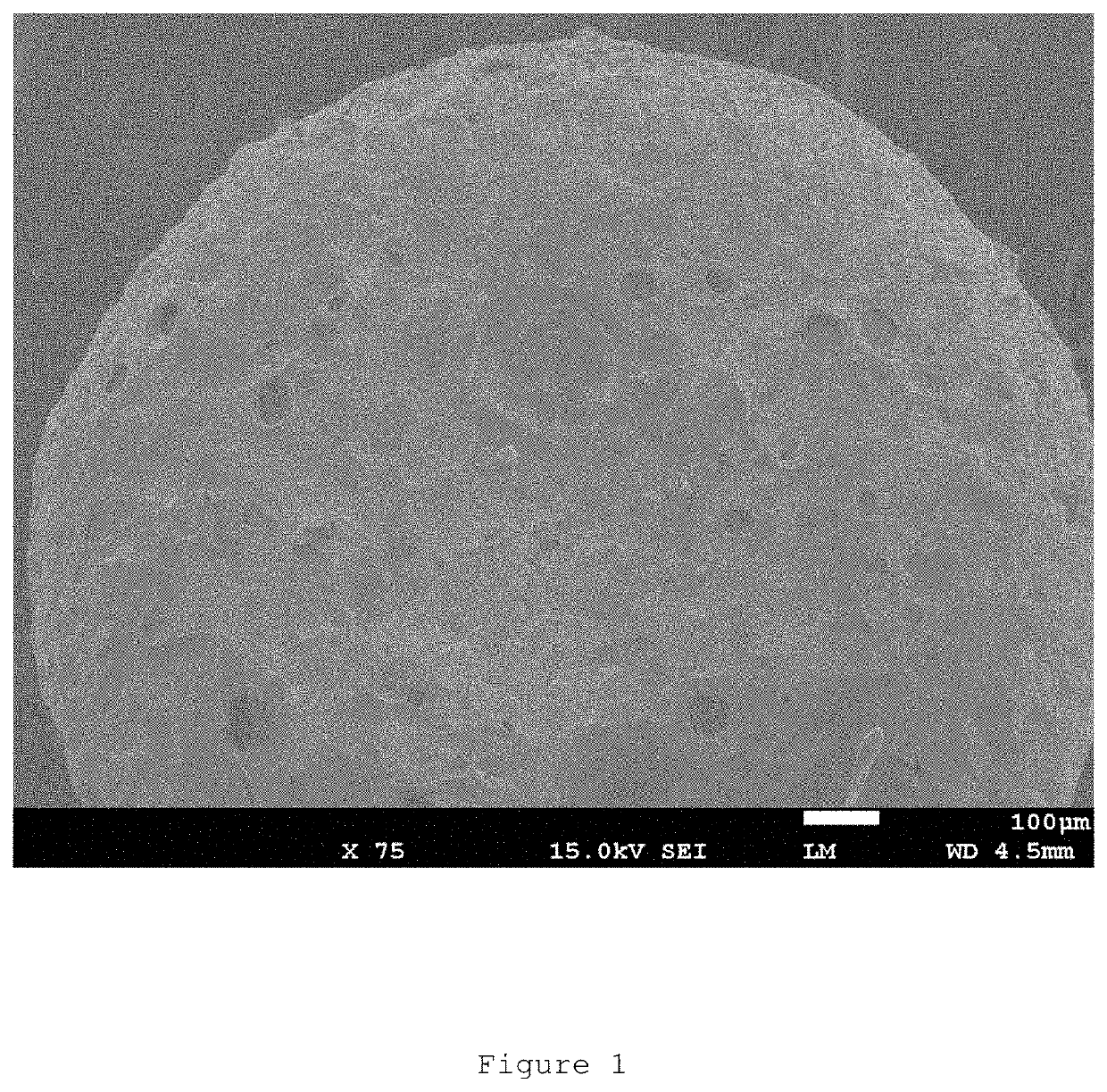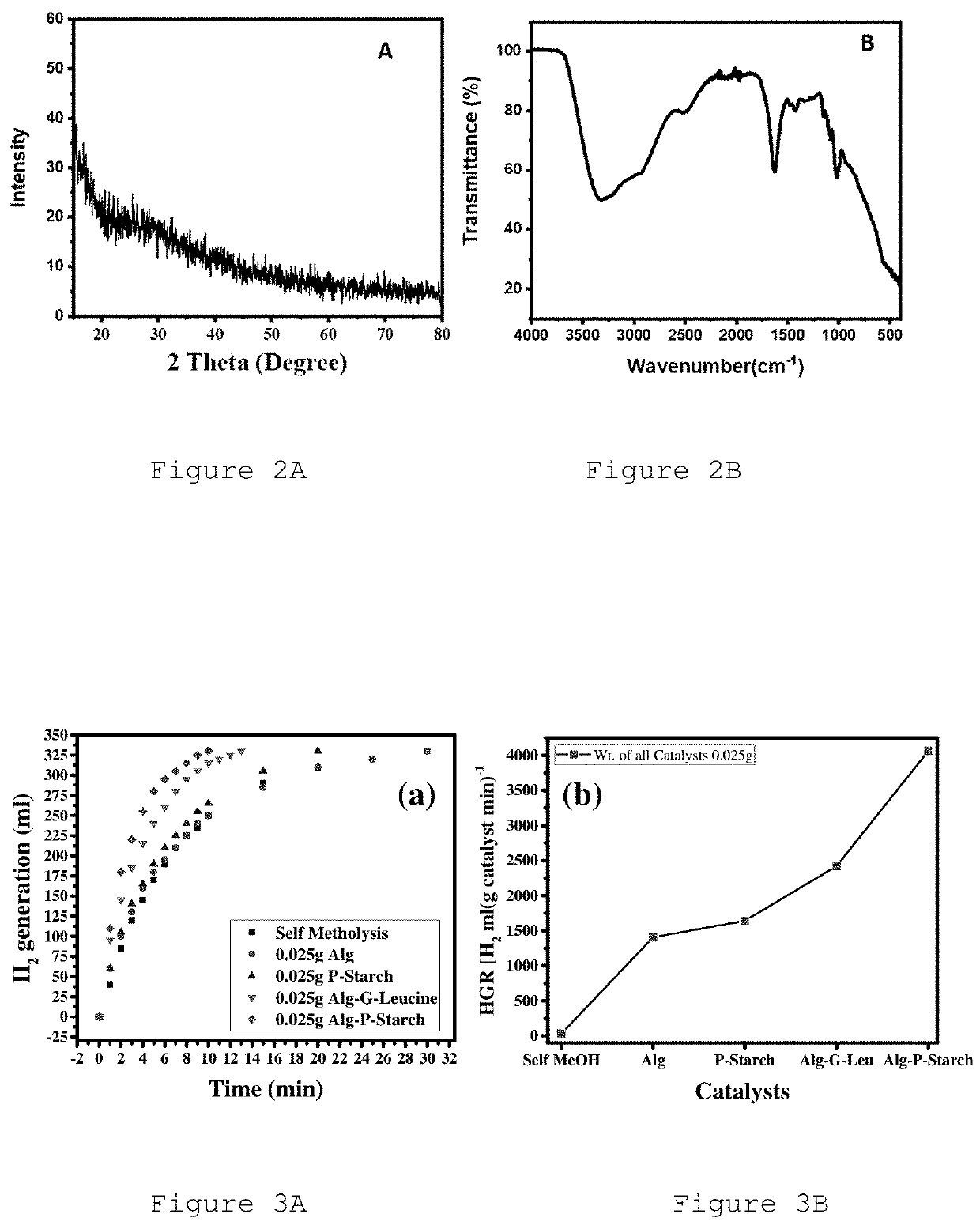Efficient catalysts for hydrogen production
a hydrogen production and catalyst technology, applied in the direction of organic compounds/hydrides/coordination complex catalysts, physical/chemical process catalysts, metal/metal-oxide/metal-hydroxide catalysts, etc., can solve the problems of high electricity cost of wind and solar, high cost of electricity than that of natural gas, etc., to achieve high hydrogen production quantity, high impact, and simple preparation
- Summary
- Abstract
- Description
- Claims
- Application Information
AI Technical Summary
Benefits of technology
Problems solved by technology
Method used
Image
Examples
example
Materials and Methods
[0053]Sodium alginate (Alg), carboxymethylcellulose sodium (CMC), agarose (AG), chitosan (CH), potato starch (P-starch) and glycyl leucine (G-leucine) all were purchased from Sigma Aldrich. Pure anhydrous aluminium chloride (AlCl3, 90%), sodium borohydride (NaBH4, 97%), copper sulphate pentahydrate (CuSO4.5H2O), iron sulphate heptahydrate (FeSO4.7H2O) and silver nitrate (AgNO3) were purchased from Fluka, UK.
[0054]Alg, CMC, Alg-P-Starch, and Alg-G-Leucine hydrogel beads were prepared by cross linking with AlCl3. During sample preparation, 10.0% w / v of Alg, 2.0% w / v of CMC, and 5.6% w / v of potato starch and glycyl leucine were used. AlCl3 (2.0 M) solution was prepared in water and used as a cross linker for the preparation of these beads. Then for preparation of Alg and CMC beads, a 5 mL syringe was filled with each viscous solution and the solution was poured dropwise into 2.0 M solution of AlCl3. Each drop turned into spherical beads upon touching the surface of...
PUM
| Property | Measurement | Unit |
|---|---|---|
| concentration | aaaaa | aaaaa |
| concentration | aaaaa | aaaaa |
| time | aaaaa | aaaaa |
Abstract
Description
Claims
Application Information
 Login to View More
Login to View More - Generate Ideas
- Intellectual Property
- Life Sciences
- Materials
- Tech Scout
- Unparalleled Data Quality
- Higher Quality Content
- 60% Fewer Hallucinations
Browse by: Latest US Patents, China's latest patents, Technical Efficacy Thesaurus, Application Domain, Technology Topic, Popular Technical Reports.
© 2025 PatSnap. All rights reserved.Legal|Privacy policy|Modern Slavery Act Transparency Statement|Sitemap|About US| Contact US: help@patsnap.com



